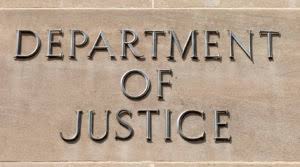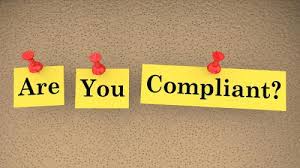DOJ Plays Catch Up in Revised Compliance Program Guidance

Let’s face it – DOJ’s revised Evaluation of Corporate Compliance Program Guidance reflects an attempt (although an important one) by DOJ’s leadership to catch up with the compliance industry. In recent years, I have argued that the compliance industry is rapidly eclipsing DOJ Guidance and expectations for the compliance industry.
As more professionals enter the compliance industry, and as spending by companies increase on compliance resources, staff and products, we are witnessing a rapid acceleration of compliance ideas and compliance capabilities. Compliance officers are creative and dedicated professionals. They inspire innovation in a new and fast-growing industry. With this demand, compliance vendors are bringing new and exciting compliance products, automated programs and data management, to the market.
The compliance industry has embraced these developments and recognized a critical change in perspective – compliance is evolving into a proactive function, replacing a retrospective strategy. This is perhaps the most significant change in compliance over the last 25 years.
Compliance is now focusing on real-time monitoring and intervention strategies designed to uncovere real risks and mitigate those risks risks prior to the occurrence of real misconduct. No proactive system will be perfect, but the change in perspective will mitigate and reduce risks in a real and tangible way.

Consider the auditing function as one example. If a company effective engages in proactive transaction monitoring and sampling, the need for resource-intensive historical audits will be less relevant since they will, by definition, present stale information about past activities.
Another example is real-time monitoring of corporate culture through quarterly, quick-hit surveys for smaller company populations – a region, a branch or a product line. Rather than conducting a company-wide culture survey or inferring culture measures from employee reporting, investigations and other data sets, quick-hit quarterly surveys and culture measurement can identify culture trends and identify potential risks and deficiencies before real and more significant issues and problems occur.
I don’t mean to repeat myself about the value of proactive strategies and rapid intervention and remediation strategies. With the advent of technology and compliance profession innovations, corporate compliance programs are developing new and effective approaches. Not to say everything is perfect, but change is occurring quickly.
DOJ’s new Guidance embraced these changes by emphasizing several points – DOJ underscored the importance of real-time monitoring activities and continuous evolution of compliance programs in response to new risks, lessons learned from investigations of misconduct, and access to data. DOJ’s perspective on compliance is catching up with the proactive approach that compliance professionals and technology providers are bringing to the compliance marketplace.

It is ironic that the compliance industry is moving beyond the regulators in developing new effective compliance strategies and products. DOJ is not used to leading the way on compliance and its history in this area has been just that – pushing companies to design and implement effective compliance programs and offering real and significant enforcement incentives to do so. Companies are embracing compliance solutions for a more important and ultimately significant reason – compliance programs are good for business and ultimately improve the company’s financial performance.















